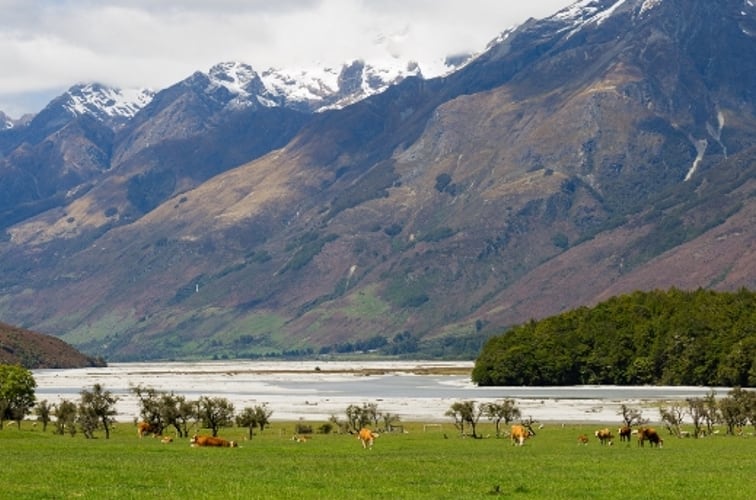New Zealand dairy farmers are being encouraged to make their submissions on a new biodiversity proposal that sets out to reverse a trend that has seen 90% of the country’s wetlands disappear over time.
The new rules propose that all councils map and protect significant natural areas of indigenous biodiversity, known as SNAs.
To develop SNAs, local authorities must go through a mapping and consultation process that gives farmers the opportunity to participate.
Properties that contain indigenous vegetation, wetlands or habitats for indigenous fauna could be affected by the proposals.
Even other farms could also be affected, such as ones that border an area of indigenous vegetation, or ones that are home to vegetation that provides safe passage for indigenous animals.
Indigenous vegetation developed for purposes other than conservation, like constructed wetlands for effluent management or riparian planting, is not subject to the new restrictions.
The Ministry for the Environment is in the process of consulting on a proposed national policy statement for indigenous biodiversity until March 14. This will set out policies to identify, protect, manage and restore indigenous biodiversity under the Resource Management Act 1991. Industry group DairyNZ has been encouraging farmers to make a submission.
“Dairy farmers have carried out a wide range of work in recent years to protect and improve biodiversity on their farms,” said Aslan Wright-Stow, DairyNZ’s environment manager.
“This includes planting, pest control, retiring or covenanting land, and fencing off native vegetation, which benefits water quality and ecosystems.
“The consultation under way is an opportunity for farmers and the community to consider practical options to preserve and enhance biodiversity, and to highlight the work they have already done to protect biodiversity,” he added.
Farms that are home to SNA areas should be able to carry out most common farming activities, though some new ones could be restricted if they harm the environment, by disrupting the ecosystem, harming threatened species or forming a barrier between SNA areas and other ecosystems, according to DairyNZ.
“It may be challenging to demonstrate that a new activity doesn’t have a negative effect on the SNA area. A new or changed activity could also potentially include increasing the stocking rate on your farm,” it warns.
If new activities are allowed, any negative effects must be managed, mitigated or remedied, depending on what is possible. If doing so is not feasible, then biodiversity offsetting or compensation may be considered. This may limit the ability of many farmers to carry out new activities.
There are some exemptions proposed to allow farmers to carry out new activities for reasons such as public health and safety, and habitat restoration.
The new proposals would also require councils to support biodiversity restoration and enhancement, including wetland restoration.
“If you plan to make changes on your farm and need a resource consent, (for example due to an effect on an SNA), it’s possible that the council may require you to carry out work to restore biodiversity,” Dairy NZ advised.
The government’s announcement in November that councils must identify and protect areas where there is significant vegetation, indigenous fauna and ancient wetlands has caused farmers throughout New Zealand to fret that they cannot make planned changes to their properties or that they would struggle to sell their land.
Substantially more bureaucratic processes and differing interpretations of the proposed rules by councils are of particular concern for many those who have SNA areas on their farms.
One 86-year-old from Greymouth on South Island found he would need consent from the Department of Conservation to fell trees, run animals or convert to new farming methods under the proposed regulations.
This is because much of his 1,500-acre block has been left undeveloped since his grandparents acquired the land in the Thirties, with 70% of the formerly gorse-covered block now regenerating native bush.
In his submission on the government's draft national policy statement, he said the SNA designation effectively took most of his farm away from him.
“As an elderly New Zealander that has worked hard all my life, paid my taxes diligently and in general tried to contribute positively to society, I am saddened whilst in the sunset stage of my life to have to deal with this blatant attack on my property rights,” he wrote.
“Who is going to pay market value on land when only 30 percent is available to be productively used?”
Another West Coast farmer was reportedly left bankrupt after a court battle with a district council left him NZ$300,000 (US$192,000) out of pocket after the authorities zoned part of his land as an SNA.
Thousands of other farmers have come out in protest since the government announced that councils must identify SNAs and protect them.
Some councils have decided not to force the SNA classification on landowners who fear they would be unable to develop their land if they went ahead with it.
Supporters argue the policy is vital as wetlands have become "probably New Zealand's most depleted ecosystem" and "remain the most vulnerable,” according to an analysis by Landcare Research, a crown research institute, in 2017.
An estimated 74,000 acres of wetlands have been either fully or partly destroyed since 2001, according to data by Forest & Bird.
Under New Zealand’s approach to consulting on a bill before a law is passed, select committees look at all submissions and consider the evidence before reporting back to parliament on its recommendations.
Farmers now have little more than three weeks before the true shape of the proposed national policy for indigenous biodiversity begins to emerge.
There is no doubt, though, that the politicians tasked with taking all opinions into account will need to find a delicate balance between protecting an extremely important ecosystem and safeguarding the livelihoods of landowners in a country where close to half of all land is being farmed.

